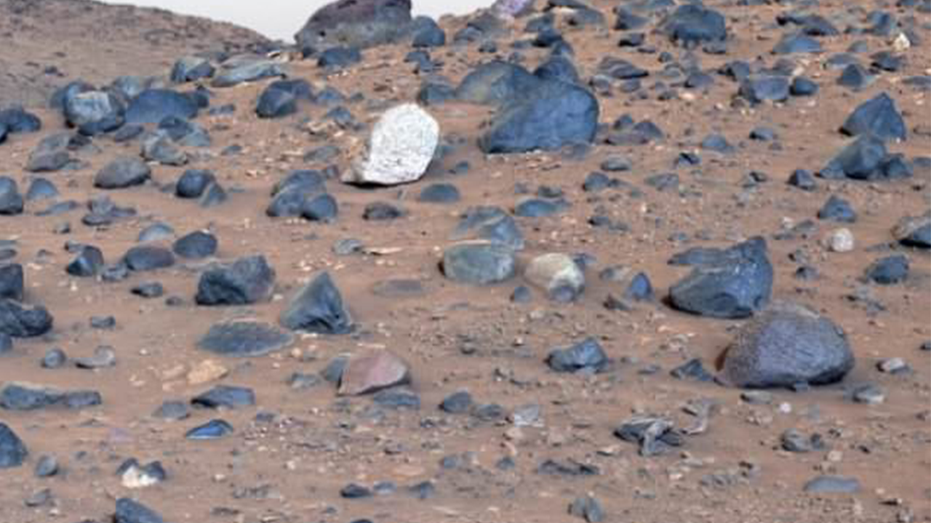NASA's Martian helicopter promises unprecedented views of the red planet
When NASA's Ingenuity helicopter took flight on Mars in April 2021, it marked a historic moment in space exploration.
This small, solar-powered rotorcraft became the first aircraft to achieve powered, controlled flight on another planet.
Now, after Ingenuity's remarkable success, NASA is setting its sights on an even more ambitious aerial explorer for the red planet.
GET SECURITY ALERTS, EXPERT TIPS – SIGN UP FOR KURT’S NEWSLETTER – THE CYBERGUY REPORT HERE
Ingenuity's journey on Mars far exceeded expectations. Originally designed for just five test flights over 30 days, it ultimately completed an astounding 72 flights in nearly three years. The helicopter served as an aerial scout for the Perseverance rover, helping scientists and engineers gather valuable data about Mars' terrain and atmosphere.
Throughout its mission, Ingenuity pushed the boundaries of extraterrestrial flight, reaching a maximum altitude of 78.7 feet, achieving a top speed of 22.4 mph and completing a single longest flight that covered 2,310 feet.
YOU'LL NOW BE ABLE TO CHARGE YOUR DEVICES ON THE MOON
NASA's Jet Propulsion Laboratory (JPL) is working on a concept for a next-generation Mars helicopter that could revolutionize exploration of the red planet. This new aircraft, still in the early stages of development, promises to be a significant upgrade from Ingenuity.
The proposed helicopter features six rotors in a hexagonal configuration and is significantly larger, potentially "the size of an SUV." It would have the ability to carry science payloads of up to 11 pounds and cover a range of up to 1.9 miles per Martian day.
The increased size and payload capacity would allow this new helicopter to conduct more extensive scientific investigations and explore areas inaccessible to ground-based rovers. This advanced design could enable scientists to study large swaths of Martian terrain in detail and quickly, including places where rovers cannot safely travel.
WHAT IS ARTIFICIAL INTELLIGENCE (AI)?
IS THIS SPACE CAPSULE HOW WE WILL LIVE AND WORK IN ORBIT IN THE FUTURE?
Before this new helicopter can take flight on Mars, NASA must address the challenges faced by Ingenuity. The smaller helicopter's crash landing in early 2024 provided valuable lessons for future designs. One key issue was navigation in featureless terrain.
Ingenuity's vision-based navigation system struggled with the sandy, rippled surface of Jezero Crater. NASA engineer Håvard Grip explained, "Lack of surface texture gave the navigation system too little information to work with."
To overcome this, the next-generation helicopter will likely feature more advanced navigation systems capable of operating in varied Martian landscapes.
GET FOX BUSINESS ON THE GO BY CLICKING HERE
PRADA'S OUT-OF-THIS-WORLD SPACESUIT FOR NASA
NASA is making significant technological advancements in preparation for future Mars helicopters. Engineers at the Jet Propulsion Laboratory have developed new carbon fiber rotor blades that are 4 inches longer than those used on Ingenuity.
These next-generation blades have undergone rigorous testing, reaching speeds of up to 3,500 rpm, which is 750 rpm faster than Ingenuity's maximum speed. The new design promises improved efficiency and performance in Mars' thin atmosphere, potentially enabling larger and more capable helicopters for future missions. These advancements represent a crucial step forward in NASA's ongoing efforts to explore the red planet from the air.
SUBSCRIBE TO KURT’S YOUTUBE CHANNEL FOR QUICK VIDEO TIPS ON HOW TO WORK ALL OF YOUR TECH DEVICES
As we look to the future of exploring Mars, these aerial vehicles could play a crucial role in paving the way for human missions. They offer the ability to scout landing sites, study the Martian environment in unprecedented detail and perhaps even assist future astronauts on the surface. The development of more advanced Mars helicopters also showcases the rapid progress in space technology. What was once a daring experiment with Ingenuity is now evolving into a robust tool for planetary exploration.
Do you think advancements in Mars exploration, like the new helicopter, are essential for our understanding of the universe and potential life beyond Earth, or should our resources be spent addressing pressing issues here on Earth? Let us know by writing us at Cyberguy.com/Contact
For more of my tech tips and security alerts, subscribe to my free CyberGuy Report Newsletter by heading to Cyberguy.com/Newsletter
Ask Kurt a question or let us know what stories you'd like us to cover
Follow Kurt on his social channels
Answers to the most asked CyberGuy questions:
New from Kurt:
Copyright 2025 CyberGuy.com. All rights reserved.

